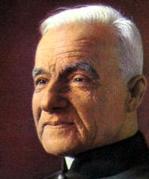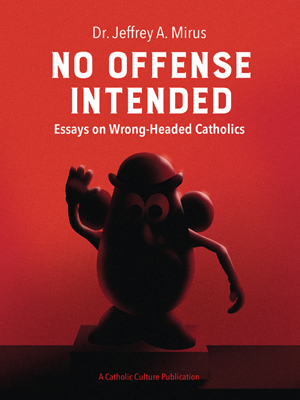13. The Cradle
After speaking about the grave, let us return to the cradle. The relation between casket and cradle determined the life and destiny of peoples. Without the cradle there is no family. Oftentimes a whole village, an entire city and a nation have developed from one cradle. We all sailed into life in a cradle boat. The cradle is the banner of the future. It is a milestone in history.
Other Peoples, Other Cradles
The cradle has a history all its own. The first cradle was mother's arm. Later on it was a woven basket. Even today, many negro tribes in Africa use a basket as a cradle. The children, placed in these baskets, are slung across the back. Some do not use the basket. They bind the children in cloth and carry them on their backs while working or going from place to place. The Norwegians and Finns have a hanging cradle, well upholstered with soft furs. The Eskimo mother, I read, carries her child in the leg of her boot. Among the Asiatic tribes, it is customary to place the child in a small hole in the ground. The larger the child grows, the larger the hole is dug. Among the Schuhungju Indians in North America, the child is placed in a basket and carried on the head of the mother. The Laplanders make a cradle of reindeer pelts and tree bark. Only the head of the infant appears. These Lapland cradles are ornamented with chains and glass beads.
The cradle is the greatest treasure of the people. In China the cradle is made of clay. The ancient Greeks used a boat-like basket. The old Roman cradle was also a basket shaped like a boat, lined with soft cloth and pillows. During the Middle Ages the style set by Rome was in vogue. The 18th century created a cradle which was egg shaped. The cradle of the duke of Reichsstadt represented a state-room, in empire style. The ancient shape of the Hungarian cradle has not passed into oblivion. It is made of linen cloth, stretched between two posts out in the open air, where the people of the future slumber while the nightingales sing.
Down the vista of the ages, we see the mother rocking the cradle with her foot, while doing her housework with her hands. The cradling and rocking made the rhythm of history.
The Small Howling Machine
Nowadays, however, the magic of the cradle is gradually disappearing. The new thought is little in favor of the cradle, because the rocking is not healthy for the infant. It has become a cold proposition of technical and mechanical skill. George Stephenson, inventor of the locomotive, used his invention to rock the cradle by steam. An American engineer married a woman physician. Her calling keeps her away from home a good part of the time, and there is a four months old baby. Naturally she has little time to attend to the child. After all, a baby is a kind of howling machine. It is quieted down by the baritone voice of the father singing lullabies. But the father has his work, too. He cannot be singing, crooning, and rocking the cradle all the time. A happy thought strikes him. He attaches an electric appliance so that the child will be rocked to its heart's content. He also attaches a gramophone and the little one can hear his father's voice crooning from the records. A rather novel idea in the opinion of the father.
Ledofsky Erno surprised the world by his invention of a self-rocking cradle. The rocking of a cradle takes time, and time that could be applied to better advantage. So to obviate this difficulty, he attached a small electric motor, which could do the work better and with greater regularity than the impatient foot. There are also cradles protecting the child from noxious gases that might be floating about in the air. Some seem as proud of these various inventions as if the happiness of mother and child depended upon them.
For a number of years now there has been a cradle apostolate in Italy. The aim is to awaken love for the child, and to arouse a sense of responsibility for its faithful and loving care. Would that we had such an apostolate in our country!
The development of technical science has made marvelous strides. But technique does not rear the child. Mother-love alone can do it, a love that is everlasting and cannot be superseded by the progress of culture. Life begins in the cradle, beside it the mother takes her place which she does not leave until the child has outgrown it. Even the use of mechanical means cannot make the mother unnecessary. It is not so much the rhythm that rocks the baby to sleep, but rather the gentle loving kiss of mother. Children can be merciless. At times they are not satisfied with having mother near them now and then, but they demand her service all day long, often all night long. The father is tired of the incessant howling, he loses his patience, finally goes to bed and leaves the little howler to the care of the mother. Who will sacrifice sleep, who will do the watching? Mother. She must bear it, she must be brave. When the little rascal will not sleep, it is mother who will softly hum a lullaby for the thousandth time, and without a whisper or complaint. She is the "valiant woman" of the Scriptures, who does not sleep and rest by night. She silently prays during the night. Finally she sings: "Sleep, my little one, sleep."
It is this little cradle that gives her such great dignity and distinguishes her as a mother. Her all is in the cradle. Passion and selfishness are not there. The tiny lodger knows no past, he smiles at the present, and the future is hidden from him. When he finally can look back to the past, and the present brings no smile, and he hears the future, then he can raise his voice in the nation's song:
God bless the hands a thousandfold
That oft when sleep had fled
Forgetful of their tired selves
Did rock my cradle bed.
This item 1473 digitally provided courtesy of CatholicCulture.org






